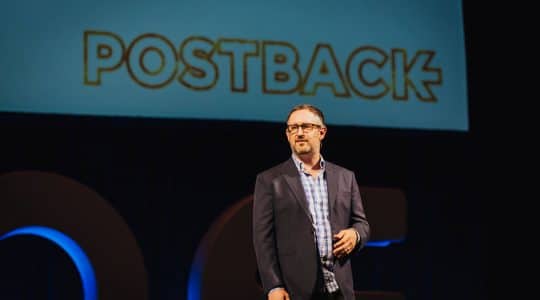
Well, the new year came and went in the blink of an eye, but not without a wave of continued change. At the end of 2021, I talked about how much the industry shifted during last year, and now it’s time to look ahead at what we anticipate this year to have in store.
We know the crypto-sphere is here, and traditional currency is quickly being disrupted in more ways than one. The creator landscape is only getting more competitive and critical for brands to expand their presence. And customers have spoken; they want more meaningful connections with the products and services they align themselves with, so businesses need to level up. Which is all to say there will be plenty of challenges for marketers to tackle in the months ahead. Below are a few of the biggest.
Web 3.0
We’ve discussed in the past how cryptocurrency and NFTs (non-fungible tokens) are starting to reshape the digital ecosystem, but now, it’s matured into a legitimate channel creating a seismic shift in the global economy. When brands like Coca-Cola, Gucci, and Clinique are leveraging NFTs in their marketing playbook, people tend to take notice. Web 3.0, a potential new version of the internet based on blockchain technology, has officially crept into everyday conversations amongst brands and consumers alike. This isn’t limited to blue chip companies with deep pockets; even the emerging startups are using this strategy, not to mention a whole industry is being built around the metaverse, its currency, and social engagement. Even former critics of the new currencies are slowly coming around.
What brands, networks, and agencies need to prepare for are the unknown variables this landscape is going to bring out. We can anticipate this will continue to evolve, but we don’t know what we don’t know yet. There are thousands of different currencies and blockchains, with more coming into the market all the time. What makes that exciting is innovation is born from change, and this year we’ll start to see an increase in dedicated managers, consultants, and even brands that specialize in the nuances of this ecosystem, including more marketing dollars being funneled into this “test and learn” environment.
Social Commerce and the Influencer Next Door
I know, I know … we’re all kind of tired of hearing about it, but are secretly in love with it: TikTok. You can’t escape limited attention spans and the need to connect with consumers as efficiently as possible. Long-form content is still a massive industry with popular podcasts and live streams getting strong viewership, but it’s getting harder to keep someone’s attention for long.
Social media has been a critical ingredient in the marketing mix for many years, but just paying for Facebook ads isn’t going to do the trick anymore (and it’s only getting more expensive). Many brands have been leveraging influencers and creators for a while now, but as this arena becomes more saturated, it’s important to sift through the noise and understand which campaigns are driving true value based on your internal success metrics. I’m confident brands will lean in more with performance-based campaigns and try to avoid paying massive upfront fees. With rising costs and a more competitive playing field, authentic connection combined with relevant content is a home run; just make sure you can deliver the message quickly.
User-generated content and social proof will continue to play a big role in helping consumers decide if the product they want or the business they support meets their individual expectations. This year we’ll continue to see platforms like TikTok create new super-influencers with highly engaged audiences. The real challenge will be for brands to capture their mission statement, product value, and positioning in a short-form way that hits all the right notes before someone swipes up. Broader digital and growth teams will also see the value these partnerships can bring for loyalty and retention as a byproduct of getting the “right” customers over the most customers.
Competition for Business and Talent Intensifies
With a massive wave of new businesses launching over the past few years, several have evolved and matured, but competition remains fierce. We’re seeing an increase in mergers and acquisitions due to shortages in technology talent and brands starting to challenge conventional beliefs about where their customers engage the most; one example is Betterment and Makara joining forces to take a bigger bite out of crypto.
It’s vital that brands understand their competition and rework their positioning to match their customers’ needs. It’s easy to assume that if you have amassed a strong number of users, your work is done. On the contrary, now more than ever brands need to take an introspective look at their identity and make necessary (and sometimes difficult) decisions to improve on the experience. This includes digging deeper on who your customers are, and where they spend their time; in other words, stop wasting marketing dollars chasing results where they don’t exist.
Brands should prioritize hiring specialists for the future of digital and partner marketing, not just for traditional channels. This includes those who can jump into the deep end on all things Web 3.0, and most importantly, understand how culture and media intersect to push the boundaries into the next generation. We’ll continue to see a diversification of acquisition streams, and more flexibility with budgets to innovate.
Personalization, Loyalty, and Retention
Customers will be particular about the brands they engage with, and often have high expectations for them, even if those expectations aren’t obvious. We know grabbing a consumer’s attention is challenging enough as it is, but how brands engage with those customers is even more critical for retaining them long-term. First impressions can last a lifetime for people who are keen to shop around frequently; everything from site experience and brand alignment to messaging and timing can shift the outcomes.
I would argue that people want to feel immediately connected on an intrinsic level — don’t doubt the emotional aspect of what a brand or product can mean to someone — and are willing to double-down with groups that fill that need. If you’ve hit that note as a brand, a proper retention and loyalty strategy should be a priority. Using a personalized approach will increase the odds of that customer having a strong lifetime value, and reward both parties with a long-standing relationship. All that said, rolling out the red carpet and making each individual feel like they are the most important person to walk through your doors can’t hurt.
In conjunction with internal loyalty efforts, a tactical partnerships program can help support this across the board. By aligning your brand with publishers, creators, and innovators that speak to your audience’s needs, you’re not only expanding your brand presence, but making the path to purchase or join that much easier.
Conclusion
This year is showing no signs of slowing down; each week seems more disruptive than the last, and we’re only a few months in! The world of digital currency and the metaverse are going to be commonplace for the foreseeable future, and brands are finally taking notice. This wave of change is going to push innovation beyond what we’ve seen, and usher in a new generation of marketers, financial analysts, creators, and everything in between. This will push the competitive boundaries and challenge both individuals and businesses to rethink their roadmaps.
Marketing efforts will look noticeably different than before, and trying to create meaningful relationships with customers can no longer be an afterthought. TikTok and other social platforms will keep driving direct commerce, and the need for specialized talent is (or should be) near the top of any brand’s priority list when looking to the future.
What is the biggest challenge you see ahead for marketers in 2022? Share your opinion in the comments below!
Author
Matt Miltenberger is the former Head of Sales for the East Coast region at TUNE. He has spent the last 10 years in the e-commerce and partnerships space, helping several enterprise-level and emerging businesses in the retail, health and wellness, fintech, travel, and mobile verticals accelerate their growth. He most recently spent nearly five years with a prominent partner marketing agency, and can often be found tinkering in the kitchen with new recipes.




Leave a Reply
You must be logged in to post a comment.